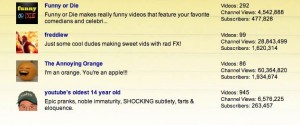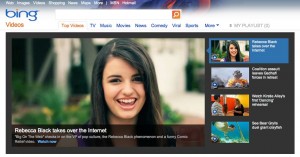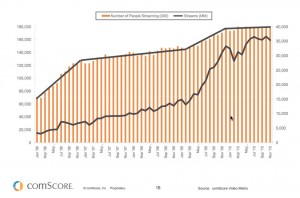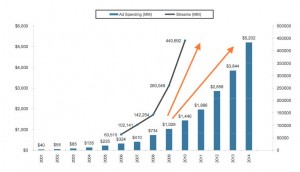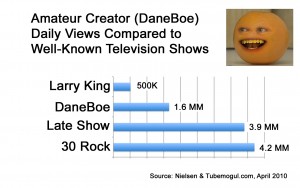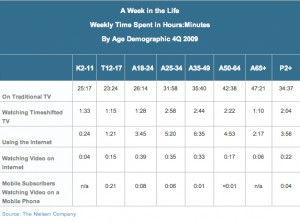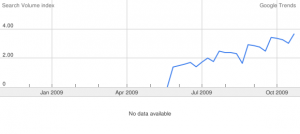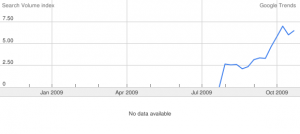ReelSEO’s Tim Schmoyer interviewed Jason Urgo about his Social Blade, which helps YouTube creators track fellow YouTubers. The website captures public information from YouTube’s API and databases them — to help creators “stalk” top YouTubers, but also see what “competitors” are doing.
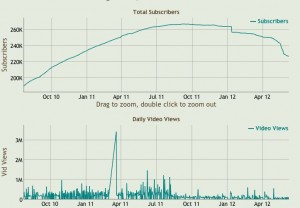
People are obviously interested in how much income YouTubers earn, and Social Blade provides a broad earning range based on total monthly views x estimated income per view (maybe 50 cents to $5 bucks per 1,000 views). There’s also an “SB score” that tracks YouTube influence (ala Klout). The site also makes projections around YouTubers hitting certain subscriber milestones, and provides simple graphs on any YouTube channels; these display data otherwise difficult or impossible to access (see chart).
Vidstatsx has a similar offering, but SocialBlade goes deeper by tracker YouTubers that are getting smaller viewers. Urgo also is helping smaller YouTubers become YouTube Partners, which gives them advanced functionality on their channel page. Here’s where you can become a Partner via Urgo and “RPM Networks,” which is a division of web studio Maker. Not everyone is approved, but it helps to have at least 1,000 daily views, clean content, and no copyright infringements.
See the video below for more info, and check out my Nalts page. You’ll see my ever-shrinking subscriber list (from 244K to 225K subscribers). I’m losing about 600 per day since YouTube is scrubbing out old, inactive accounts that subscribe. Obviously this won’t effect me since dead accounts don’t watch a lot of videos. By comparison, here’s the VidStatsx page on my Nalts account. It focuses more on top YouTubers and hour-by-hour changes.
The data sites continue to emphasize subscriber data, which to me is not as important as a) a channel’s total views to date, and b) the average number of views on a creator’s recent videos. The former drives a creator’s income, but the latter is important for brands looking to sponsor YouTubers. How many views can they expect on a sponsored video? To get an answer, look at the past 10-20 videos and average their views.


